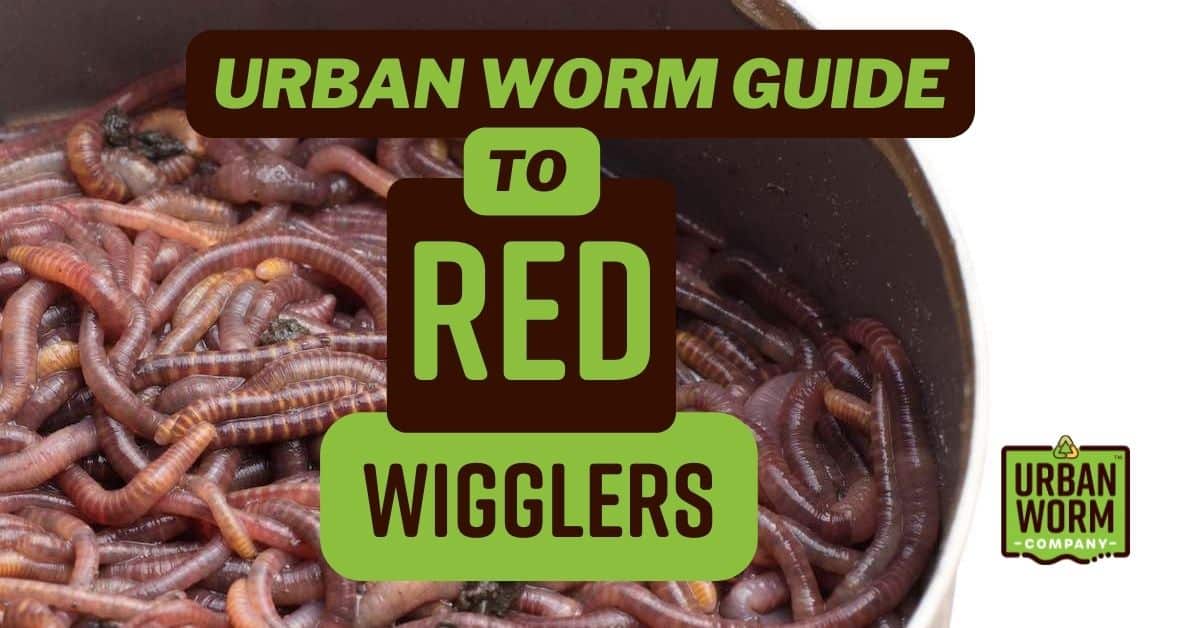Exploring the Systems of Red Wiggler Composting: A Comprehensive Guide to the Refine and Its Favorable Influence on Sustainable Gardening Practices
The complex systems of red wiggler composting, using the distinct physiology of Eisenia fetida, present an engaging method for improving sustainable horticulture methods. As urban gardening gains traction, recognizing the nuances of this composting method comes to be significantly pertinent.
Comprehending Red Wigglers
Red wigglers, scientifically understood as Eisenia fetida, are a species of earthworm extremely regarded for their effectiveness in composting organic waste. These worms prosper in nutrient-rich atmospheres, particularly in decomposing organic issue, making them suitable for vermicomposting systems - Red Wiggler Composting. Identified by their reddish-brown coloration and fractional bodies, red wigglers are smaller than usual earthworms, usually measuring between three to 4 inches in length
Their special physical characteristics boost their composting abilities; for example, they have a high reproductive price, allowing populaces to increase rapidly under ideal conditions. Red wigglers take in natural material, simplifying with their digestive systems, which leads to nutrient-rich spreadings that act as a superb organic plant food. Their ravenous appetite enables them to process big quantities of food waste successfully, considerably minimizing garbage dump contributions.
Along with their composting prowess, red wigglers play a crucial duty in soil wellness. Red Wiggler Composting. They aerate the soil and assist in the disintegration of raw material, further enriching the soil environment. Recognizing the qualities and eco-friendly advantages of red wigglers is important for anybody seeking to carry out lasting gardening practices through effective composting techniques
The Composting Refine
The composting process involves damaging down natural products into nutrient-rich compost, a task that red wigglers excel at due to their specialized gastrointestinal systems. These worms eat food scraps, yard waste, and various other natural issue, changing them into valuable compost through a collection of organic and chemical processes.
At first, the raw material is blended with bedding products such as shredded paper or dried out fallen leaves, producing an optimal environment for the worms. As the red wigglers consume this mixture, they simplify via their digestive tract, where microbes additionally disintegrate the material. This procedure produces warm, advertising microbial task, which accelerates disintegration.

Benefits of Red Wiggler Composting
Eco-conscious people and lots of gardeners acknowledge the many benefits of red wiggler composting, making it a preferred selection for efficient waste management. Among the key advantages is its capability to substantially decrease natural waste in landfills - Red Wiggler Composting. Red wigglers effectively damage down kitchen area scraps and other biodegradable products, transforming them right into nutrient-rich vermicompost that enriches soil wellness
Moreover, red wiggler composting boosts dirt structure and fertility. The resulting vermicompost is bursting with advantageous microorganisms, which promote plant development and improve nutrient retention. This natural fertilizer not only supports lasting gardening methods yet additionally minimizes dependence on chemical plant foods, cultivating a healthier environment.
In addition, red wiggler composting is a space-efficient method, making it excellent for metropolitan gardeners with minimal space. The procedure can look at more info be performed indoors or outdoors, allowing for year-round composting no matter climate problems. In addition, red wigglers are low-maintenance microorganisms that call for marginal care, making them accessible for amateur gardeners.
In essence, the advantages of red wiggler composting prolong past waste reduction; they add to much healthier dirts, sustainable horticulture practices, and environmental stewardship, placing it as a useful method in contemporary cultivation.
Ideal Practices for Composting
For effective red wiggler composting, sticking to finest methods is vital to maximize performance and make sure an effective environment for these worms. Initially, it is necessary to maintain a proper carbon-to-nitrogen proportion, ideally Read Full Report around 30:1. This balance advertises optimum disintegration and boosts the worms' wellness. Include a mix of environment-friendly products, such as veggie scraps, and brownish products like shredded paper or cardboard.
Following, screen dampness levels, going for a wet, sponge-like consistency. Extremely wet click here to read conditions can bring about anaerobic decomposition, while extreme dryness may impede worm task. In addition, make sure correct aeration by transforming the garden compost frequently, which aids prevent compaction and enables appropriate oxygen circulation.
Temperature is one more important factor. Keep a range of 55 ° F to 77 ° F(13 ° C to 25 ° C) to promote worm task and microbial development. Ultimately, avoid presenting meat, milk, and oily foods, as these can attract insects and produce smells.
Enhancing Sustainable Horticulture
Sustainable gardening embodies a holistic method that balances eco-friendly principles with functional horticulture techniques. By including techniques such as red wiggler composting, gardeners can significantly enhance their techniques, cultivating a much more resilient community. Red wigglers, renowned for their effective decay capabilities, convert natural waste right into nutrient-rich compost, consequently enhancing the dirt without relying upon chemical plant foods.
Applying lasting horticulture methods, such as crop rotation, buddy planting, and mulching, further enhances the advantages of composting. These methods not only enhance soil structure and fertility yet additionally advertise biodiversity, drawing in valuable pests and microorganisms that add to plant health. In addition, utilizing indigenous plants can lower water usage and minimize upkeep, lining up with water preservation initiatives.

Final Thought
In verdict, red wiggler composting stands for a vital approach for enhancing sustainable gardening practices. Ultimately, the adoption of red wiggler composting can considerably add to eco-friendly gardening, benefitting both urban and novice garden enthusiasts in their growing initiatives.
The complex systems of red wiggler composting, using the special physiology of Eisenia fetida, provide a compelling method for boosting lasting horticulture methods. Comprehending the qualities and ecological advantages of red wigglers is crucial for any person looking to apply lasting gardening practices via reliable composting methods.

In verdict, red wiggler composting stands for a crucial technique for enhancing lasting gardening techniques. Ultimately, the fostering of red wiggler composting can dramatically add to environmentally friendly horticulture, benefitting both city and beginner garden enthusiasts in their growing initiatives.